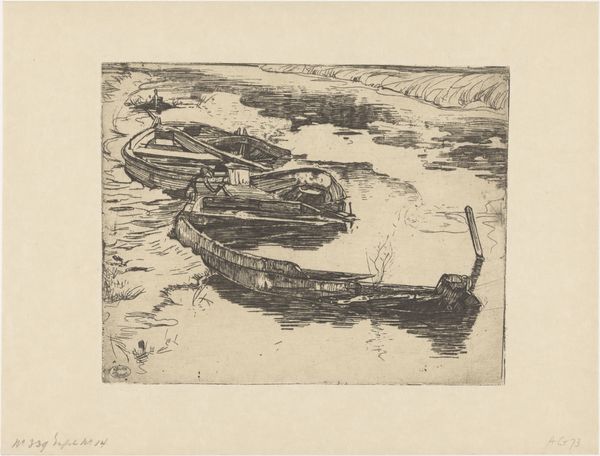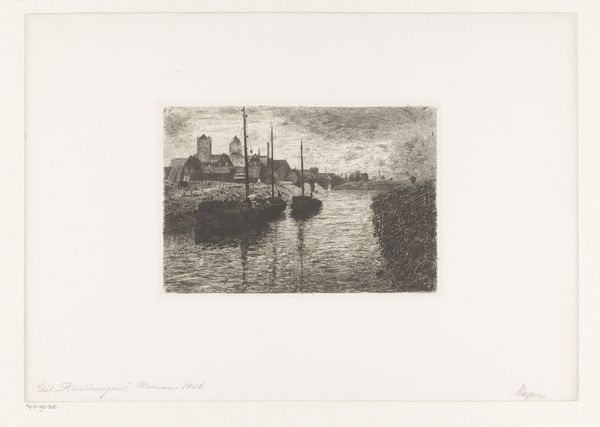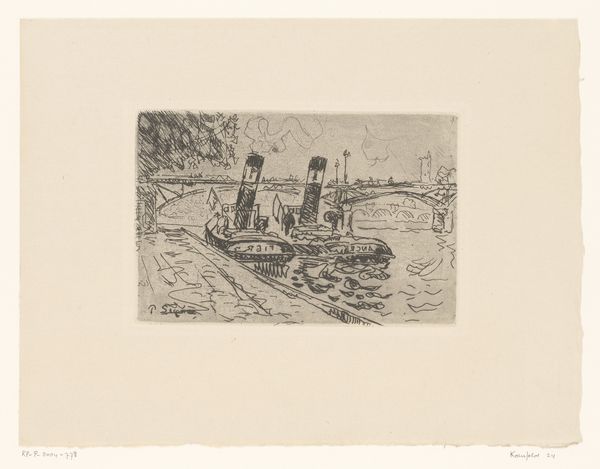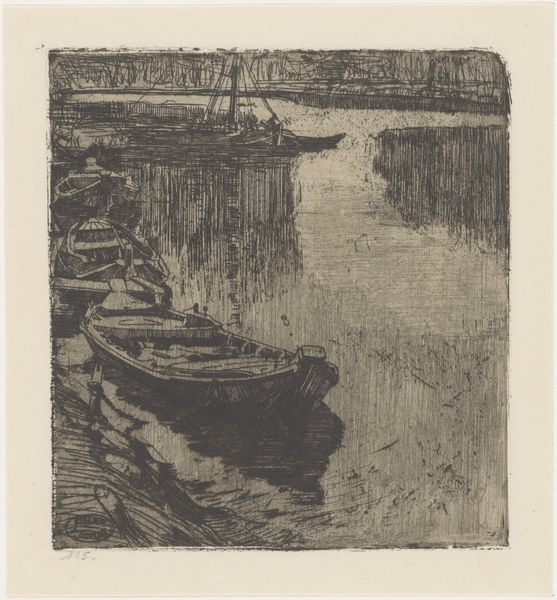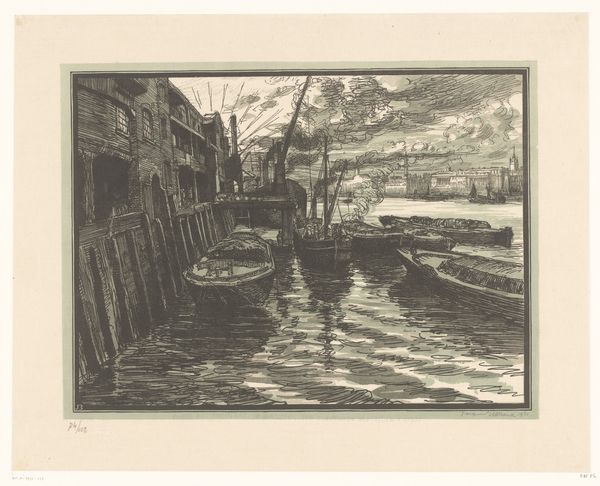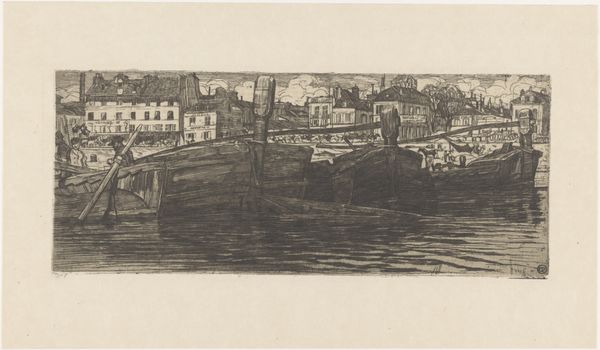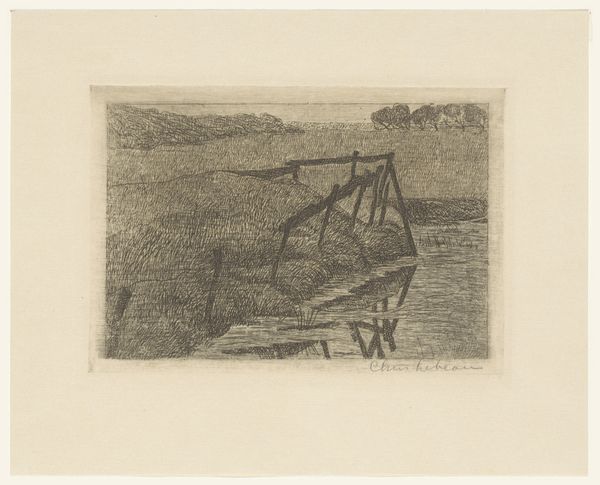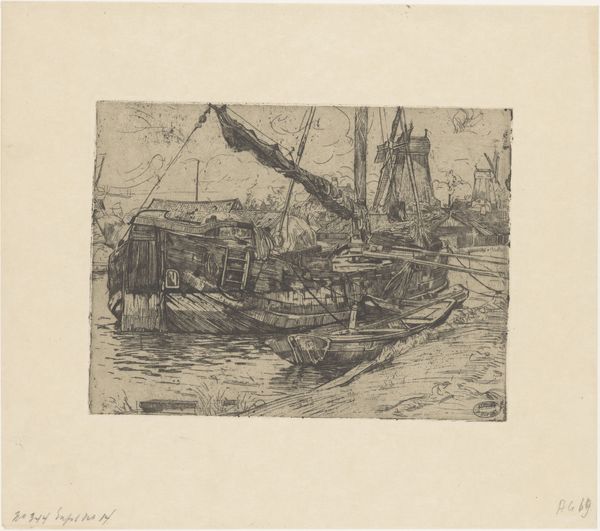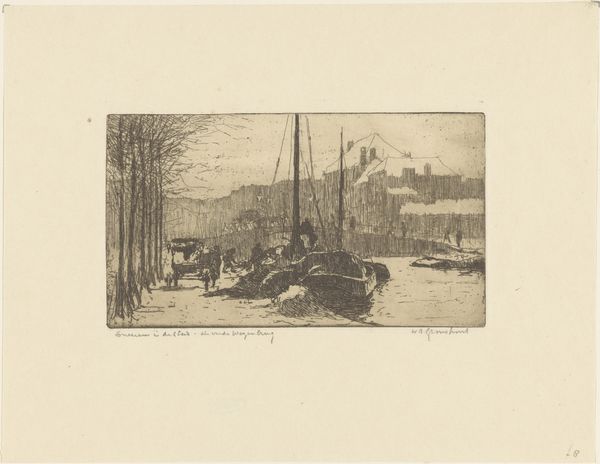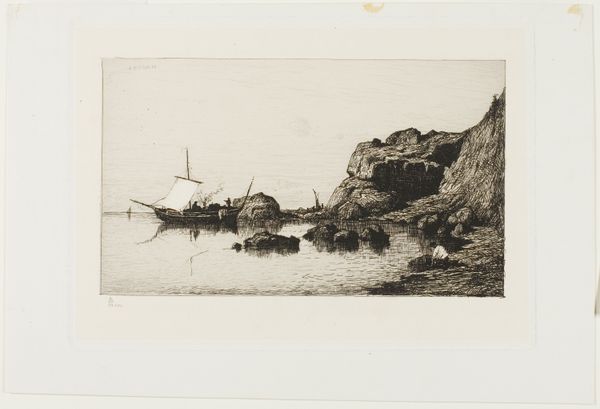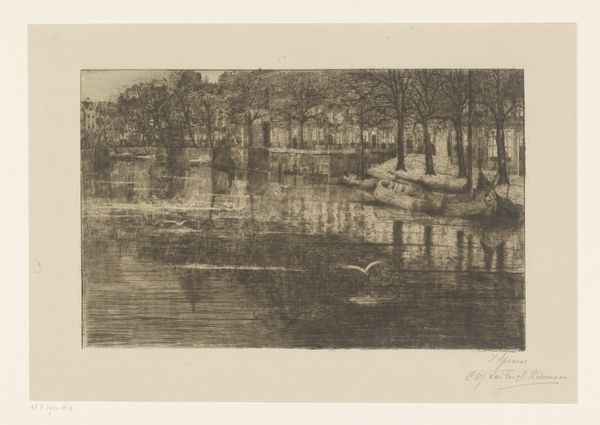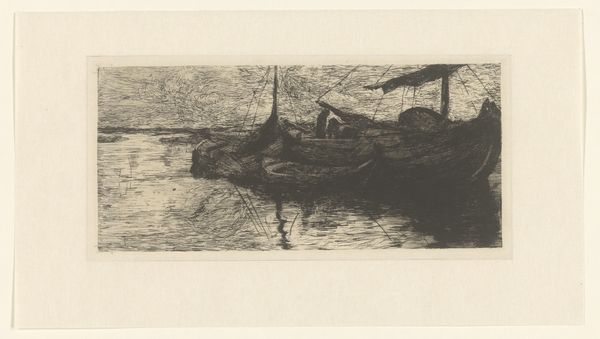
print, etching
# print
#
etching
#
landscape
#
etching
#
cityscape
Dimensions: height 148 mm, width 196 mm
Copyright: Rijks Museum: Open Domain
Curator: This is Pieter Dupont's "Stoomboot in het Westerdok in Amsterdam," made around 1895. It's an etching, printed on paper. What strikes you immediately about it? Editor: The sheer bulk of the steamboat. It dominates the composition, a looming monument of industrial prowess. I am really intrigued by the artist choice to reproduce a landscape that is both industrial and marine, by favoring engraving that seems very raw. Curator: Absolutely. Steamships in this period were not just transportation; they symbolized progress, connectivity, and, of course, trade. Consider the Westerdok itself—a key area in Amsterdam's expansion as a port city. Editor: And Dupont captured it all with these decisive etched lines. Look at the reflections in the water; they're not smooth or idyllic, but almost frenetic, mirroring the energy of a working dock. It all speaks to the conditions surrounding labor and raw materials involved in building and powering these behemoths. Curator: Precisely. And it hints at the complexities—the benefits and consequences—of such rapid development. There's a power dynamic visible in the frame here too. Editor: Right. The vessel eclipses the cityscape, the water currents disrupt its reflection to mark an unstable tension between those entities. I keep returning to the etching technique. It doesn't try to prettify anything; it presents a functional scene with remarkable efficiency. Curator: Etching in itself has historical relevance. It has origins tied to armor decoration, adapted as a printmaking medium and, over time, allowing for the democratization of image production. It feels appropriate that an etching, relatively inexpensive, would be the format to showcase industrial subject matter. Editor: So we have these overlapping symbols: The steamboat, the etching medium, each referencing technological advancement and its complicated role. It definitely offers a view of Amsterdam at a very specific moment. Curator: The piece embodies how deeply industrial transformation was embedded into the cultural and economic consciousness of the 19th century. We are left reflecting about it even now. Editor: And considering what this implied then, and continues to imply today, it invites a critical questioning of industrial processes. I leave here appreciating how the materials serve a historical narrative.
Comments
No comments
Be the first to comment and join the conversation on the ultimate creative platform.
